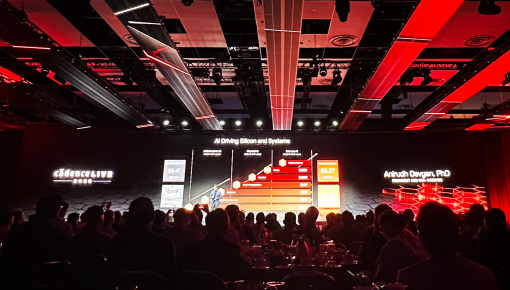How will data and AI change innovation and design? – Part III
Data and AI are taking on a greater role in how we work, from helping us make decisions to replacing certain tasks altogether. However, McKinsey predicts that fewer than 5% of occupations can be fully automated. What impact will AI have on future innovation and design services?
In this article series, I explore the impact of AI-enabled data applications on innovation and design services today. I believe there are opportunities for data and AI in the design process, beyond automation of repetitive analytical tasks.
Six principles are foundational to Qindle’s data-driven design vision: Monitor, Automate, Customize, Synthesize, Reproduce and Create. In this article, I’ll outline two principles in more detail: Customize and Synthesize.
Principle 3 – Customize
 AI-based personalization uses customer information to deliver customized content, products and services in real time. It targets individual needs instead of grouping people together into broader categories.
AI-based personalization uses customer information to deliver customized content, products and services in real time. It targets individual needs instead of grouping people together into broader categories.
This principle is already widely used to deliver hyper-personalized website experiences. One of the best-known examples here is Amazon, where the company’s recommendation algorithm suggests new products based on consumer tastes and personality. Does it work? After the algorithm’s introduction, sales increased 29% over the same quarter in the previous year.
Another (slightly controversial) application of this principle is hyper-personalised advertising, or micro-targeting. Gucci used Reface AI to swap faces and enable users to virtually try on clothes as part of a trial with Kering, resulting in one million swaps in a single day.
Similarly, Zalando created a campaign featuring model Cara Delevingne. Using deepfake technology, they created 290,000 localized ads containing a range of alternative shots and voice fonts. The campaign ran on Facebook across 12 countries, gaining 180 million impressions across social media, according to micro-targeting specialist agency Infinitizer.
How will this principle influence designers and their work, as they look to develop innovative new products? Maurice Conti, CEO of Applied Intelligence, believes the invention of intuitive AI will change the relationship between an industrial designer and their product in the real world.
The insights that designers use to start the design process will now originate from user feedback received after the product has already been sold and used in the real world. Products with digital nerve systems (sensor clouds) can provide real-time feedback to designers who can customize a product to a specific user or use case. According to Conti, this will drive the shift from “…making people want our stuff, to stuff that people want” through sensor technology and AI-enabled data.
When consumers see products as extensions of themselves, they are willing to buy more, pay a higher price and advocate to friends.
The possibilities are endless for AI-enabled data that could customize consumer experiences in real time. Data can support the ‘seduction’ element as well the value creation element of design. In this future, the role of designers as quality and ethics compasses will be more important than ever.
Principle 4 – Synthesize
 AI-based behavior prediction models can effectively create clusters of common traits from unstructured data.
AI-based behavior prediction models can effectively create clusters of common traits from unstructured data.
The models can segment and group customers with similar features, and therefore similar buying behaviors. In other words, development of endless scenarios from multiple disconnected data points.
Also known as ‘advanced forecasting’, this technique is widely applied in sales forecasts, consumer purchase behavior tools like Xineoh, and also in the domains of CRM, price-modelling, inventory management and more. Netflix is using the same principle to recommend movies and auto-generate artwork.
Innovation and design communities value tools that can generate future consumer scenarios and trends, backed by data. Today, there are several platforms that deliver AI-enabled trend prediction models based on social data. For example, Black Swan Data is “using AI to unlock the power of social data to understand and predict consumer trends”.
Black Swan offers Trendscope, a platform that provides consumer insights that can, in turn, fuel future business innovations. The platform digs into the consumer factors that underly each trend, a useful input to new product development.
At Qindle, data science is a critical tool for evaluating the quality of the trends and insights we work with. Prediction models correlate consumer pain points with the group of users who experience them. That extra layer of detail is essential to crafting ideas that fit narrow user segments.
This is article 3 in a series of 4, focused on my vision of how data driven, AI-enabled tools will change creative industries. Find here Part 1: Introduction to How will data and AI change Innovation and Design?. Part 2: Principles ‘Monitor’ and ‘Automate’ and Part 4: Principles ‘Reproduce’ and ‘Create’.
This article was first published on Taco’s Schmidt Linkedin Pulse on June 11, 2021.


